#Wrightbus
Explore tagged Tumblr posts
Text
double decker bus, but not that double decker bus


359 notes
·
View notes
Text

Bus Travel NZ (Tranzit Group) № 3105 [Optare MetroCity V1080MC] seen on a Blue Bus service earlier this year.
3105 and 31?? were transferred from the Wairarapa to Tāmiki Makaurau in order to staff the transfer bus from car parks D and E of Auckland Int'l. However, this was short-lived as both buses proved immensely unreliable and 31?? never entered service due to constant breakdowns.
Tranzit then put 872 [MAN 15.250/MCV eVolution] on the run, which has now been replaced with a van for some reason. I am honestly unsure why on earth a van is filling in for this service. Instead of something with dedicated luggage racks, like the B7RLEs* or the remaining Wrightbus Streetlite-DFs**. Not to mention the lack of EVs. Frankly, something needs to change and fast. The car traffic at NZAA is abysmal, as I found out just last week, and it is easily solved by adding more buses.
*Assigned to Green Bus (terminal transfer)
**Assigned to Yellow Bus (hotels). All Wrightbus Streetlite-DFs sold to Uzabus, replaced with EVs.
7 notes
·
View notes
Text
First Bus asks Wrightbus to retrofit 30 diesel buses - electrive.com
0 notes
Text
UKEF Catalyzes Northern Irish Tech Expansion with $100m Deal

A Milestone for Northern Irish Innovation
In a significant boost for Northern Ireland's burgeoning tech sector, UK Export Finance (UKEF) has partnered with HSBC UK to unlock a landmark $100 million financing deal for Banbridge-based EOS IT Holdings. This collaboration underscores the UK government's commitment to fostering global trade and supporting local businesses in their quest for international expansion.
Unleashing Potential: The EOS IT Holdings Story
Expanding Reach and Creating Jobs EOS IT Holdings, a specialist in audio-visual and video-conferencing technology, is set to embark on an ambitious growth trajectory, fueled by this new financial injection. The company plans to leverage the funds to scale up operations, invest in state-of-the-art equipment, and create up to 100 jobs in Northern Ireland over the next two years. This move not only highlights EOS's role as a leader in the tech industry but also demonstrates the potential for Northern Irish businesses to make a mark on the global stage. UKEF and HSBC UK: Partners in Growth The partnership between UKEF and HSBC UK is a testament to the innovative financing solutions being made available to UK businesses. By providing a Standby Letter of Credit facility, these institutions are helping EOS to navigate the complexities of international trade, ensuring the company has the resources needed to seize overseas opportunities.
Government Support: Fueling Economic Prosperity
A Commitment to Exporters Chancellor of the Exchequer Jeremy Hunt lauded the deal as a prime example of the UK's dedication to its exporters. By facilitating access to crucial financing, the government aims to spur economic growth, foster innovation, and support job creation across the country. This initiative is part of a broader strategy to position the UK as a leader in international trade and investment. The Role of UK Export Finance Elizabeth McCrory MBE, UKEF's Export Finance Manager for Northern Ireland, emphasized the importance of supporting businesses like EOS that are at the forefront of growth industries. UKEF's role in enabling companies to thrive in the global market is crucial for the UK's economic resilience and competitiveness.
A New Era for Northern Irish Tech
Leveraging Global Networks for Local Benefit Laura Murray, MD Head of Sales, Global Trade & Receivable Finance at HSBC UK, highlighted the bank's unique position to support global businesses like EOS through its extensive geographic network. The collaboration with UKEF exemplifies how strategic financial support can catalyze business expansion, allowing companies to capitalize on international opportunities. Building on a Legacy of Success This deal builds on UKEF's track record of facilitating significant financing packages for Northern Irish businesses, including a £50 million package for Wrightbus. It also aligns with the objectives of the 2023 Northern Ireland Investment Summit, showcasing the region's innovation and expertise in future-facing industries.
A Beacon for Business and Innovation
The UKEF-backed financing deal for EOS IT Holdings marks a pivotal moment for Northern Ireland's technology sector. It illustrates the tangible support the UK government and financial institutions are providing to local businesses, enabling them to compete on the global stage. As EOS IT Holdings embarks on this exciting phase of growth, it sets a compelling precedent for what Northern Irish companies can achieve with the right support and vision. Sources: THX News & UK Export Finance. Read the full article
#EOSITHoldings#Financingforgrowth#Globalmarketexpansion#HSBCUKdeal#Internationaltradesupport#JobcreationinNorthernIreland#NorthernIrishtechbusiness#StandbyLetterofCredit#Technologysectorinnovation#UKExportFinance
0 notes
Text
Copper Clad Steel Wire Market Estimated to Witness High Growth Owing to Rising Demand in Construction Industry

Copper clad steel wire is a type of composite material consisting of a steel core coated with a layer of copper. It possesses properties of both steel such as high strength and copper such as excellent conductivity. Copper clad steel wire is majorly used in transformers, motors, generators and other electrical equipment for its ability to efficiently conduct electricity while providing mechanical strength. It helps in reducing energy losses and enhancing the performance of equipment. The growing construction industry has augmented the demand for power infrastructure and electric vehicles which is propelling the copper clad steel wire market.
The global copper clad steel wire market is estimated to be valued at US$ 0.99 Bn in 2023 and is expected to exhibit a CAGR of 47% over the forecast period 2023 to 2030. Market Dynamics: One of the key drivers for the copper clad steel wire market size is the rising demand from the construction industry. Rapid urbanization and growing investments in infrastructure development projects across both developed and developing economies are fueling the demand for electricity. This is subsequently propelling the need for efficient conductors like copper clad steel wire in transformers and other equipment being installed at construction sites as well as in power grids. Moreover, increasing investments towards upgrading the existing power infrastructure to integrate renewable energy will further support the market growth over the coming years. However, volatile copper prices continue to pose challenges for market players. Copper Clad Steel Wire Market SWOT Analysis Strength: Copper clad steel wire has high tensile strength and flexibility. Its conducts electricity well while resisting corrosion making it ideal for electrical and telecom applications. It can withstand higher operating temperatures compared to aluminium and copper wires. Weakness: Raw material prices especially of copper and steel are volatile which increases production costs. Copper clad steel wire requires more complex manufacturing processes than plain copper or aluminium wires raising costs. Opportunity: Growing power transmission and distribution networks in developing regions drives demand. Rising investments in telecommunication infrastructure expansion opens new avenues. Rapid urbanization and industrialization boosts construction activities employing copper clad steel wires. Threats: Developing energy efficient alternatives and technologies pose substitution threat. Slowdown in major end-use sectors impacts demand adversely. Trade wars and geo-political issues disrupts supply chains. Key Takeaways The global copper clad steel wire market is expected to witness high growth. The global copper clad steel wire market is estimated to be valued at US$ 0.99 Bn in 2023 and is expected to exhibit a CAGR of 47% over the forecast period 2023 to 2030.
Regional analysis comprises Asia Pacific dominates currently due to massive infrastructure development and industrialization in China and India. It is expected to maintain its leading position throughout the forecast period backed by continuing investments. Key players operating in the copper clad steel wire market are Ballard Power Systems, Toyota Motor Corporation, Hyundai Motor Company, New Flyer Industries, Van Hool, Wrightbus. Copper clad steel wire finds wide usage in electrical distribution, power generation and transmission, telecommunications, and construction industries. It exhibits superior conductivity and ability to withstand high operating temperatures compared to copper and aluminum.
Get more insights on this topic: https://www.newswirestats.com/copper-clad-steel-wire-market-size-and-outlook/ Explore more information, Please visit:https://www.urdughr.com/2023/12/ecoelegance-cellulose-plastics-the-green-alternative-to-traditional-petroleum-based-plastics.html
#Copper Clad Steel Wire#Copper Clad Steel Wire Market#Copper Clad Steel Wire Market size#Copper Clad Steel Wire Market share#Coherent Market Insights
0 notes
Text
Wrightbus 'GB Kite Electroliner' Classed As The Most Efficient On UK’s Roads.
http://dlvr.it/Sq075G
0 notes
Text

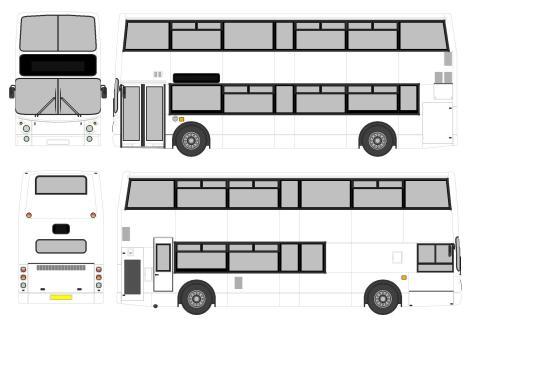


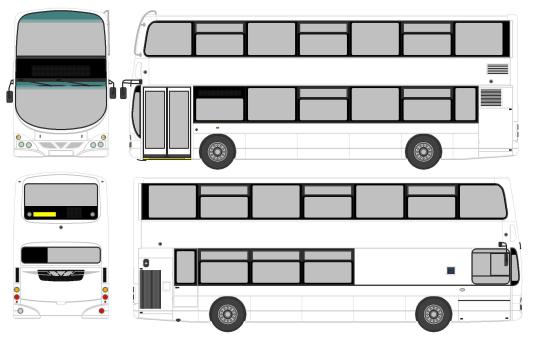

1. Plaxton Pointer 2. Transbus ALX400 3. MB Citaro 4. Plaxton President 5. Volvo/Wrightbus Gemini 1 6. Volvo/Wrightbus Renown
0 notes
Text

Wrightbus New Routemaster Arriva London, LTZ 1716, Release the Kraken Linie: 59 Ziel: Euston 1:76 CORGI Link to order: https://sattler-collecting.eu/Hersteller-314/CORGI-316/OM46638A.html
1 note
·
View note
Text
117 new electric buses to be rolled out across England
New Post has been published on https://petn.ws/yIZh9
117 new electric buses to be rolled out across England

Nearly 120 new battery electric buses will be deployed in England as part of a £25.3 million Government investment. The Department for Transport (DfT) said 117 of the zero-emission vehicles will be rolled out in Yorkshire, Norfolk and Hampshire. The buses will be manufactured in Northern Ireland by Wrightbus and operated by First Bus. The […]
See full article at https://petn.ws/yIZh9 #PetTravelNews
0 notes
Text
Wrightbus to develop hydrogen production facility#Wrightbus #develop #hydrogen #production #facility
Wrightbus is planning to develop a green hydrogen production facility at its factory in Ballymena. The proposal is being made in partnership with a sister company, Hygen Energy. Part of the Wrightbus business is the manufacturing of hydrogen-powered buses, some of which are operated by Translink. The new facility would help create a reliable source of fuel for those buses and other…

View On WordPress
0 notes
Text
Congres Barcelona - Day 1
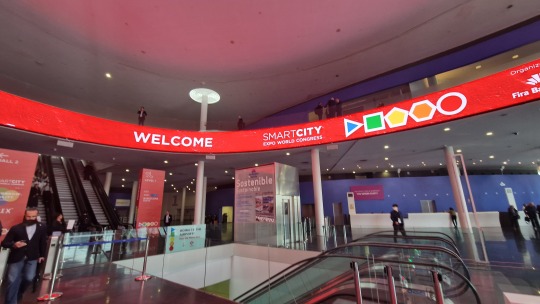
From the 15th till 17th of November I have visited the Smart Cities World Expo Congress in the Fira in Barcelona. More specific I went to the part of the congress concerned with Future Mobility; the Tomorrow.Mobility World Congres.
The Expo was a mixture of compagnies exposing their products, governments trying to help promote these companies with networking pavilions and trying to open their markets up for companies from other countries and there were several lectures which were classified into keynotes, roundtable events, open side events and solution speaks.
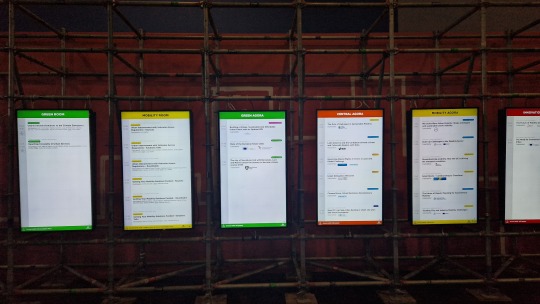
Apart from wandering along the Expo, these were the lectures I visited this day:
Revolutionising Mobility; How the UK is driving the transport revolution
This open side event was hosted by the UK Department for International Trade (DIT). After a welcoming speech by the UK High Commissioner there were two short roundtable sessions preceded by a presentation.
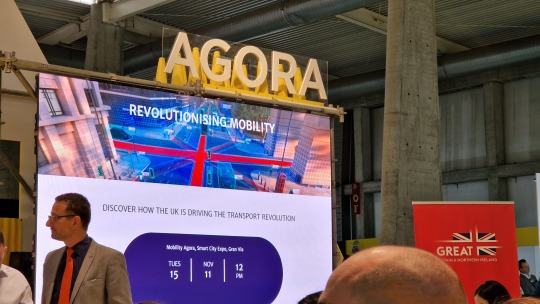
In the first round there was EmergencyOne (manufacturer of emergency vehicles), Tevva (scale up manufacturer of hydrogen extended HGV’s) and Wrightbus (manufacturer of PT buses). Each of them told us how they were trying to revolutionise their industries by creating EV vehicles. The latter two settling on hydrogen fuel cells in particular. As the person from Wrightbus said; battery-EV’s were the technology from yesteryear. These were used in buses 15 years ago. Hydrogen is – especially in a high demand environment – a far better solution.
All three speakers settled in the end that there shouldn’t be a definite choice between battery powered or hydrogen fuel cell powered. Each technology cater their own demands and can co-exist in the future mobility world.
In the second round there was focus on innovation in transport. The speakers were Humanising Autonomy (Human Intelligence consultancy agency), Stuart (a last-mile B2B urban logistics company) and a representative from the Sunderland City Council.
Their message was primarily about smart mobility being focused too much on the technological side and far too less on the human side. What do people want, need, understand? How can technology assist the needs of humans and equalize opportunities in less connected communities? Stuart – of course – emphasised as well that the logistics side of smart and urban mobility is often neglected, whilst it forms one of the largest influx of vehicle movements in urban areas.
Techno-Optimism vs Actual Human Needs
This was by far the most spectacular session of the day, were it only for Mikael-Colville Andersen who was buzzing as a speaker.
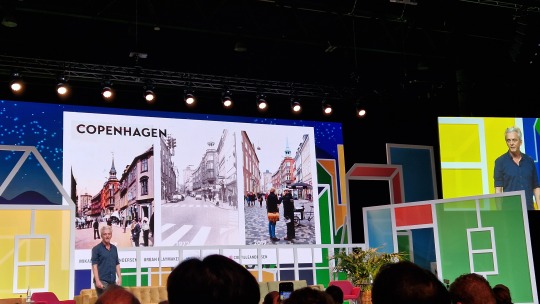
Mikael told us that the COVID pandemic showed that the 15-minute city concept is rubbish; before cars were introduced, every city in Europe was basically a 15-minute city. Just look at the city centers built before the 1900’s; they are densely built, with small conveniences in practically every street (bakery, grocery store, convenience store, café, etc.) and pocket green on nearly every street corner. It was only when cars showed up, everything had to make way for the cars, who grew bigger and more and eating up public space. Public space that humans need to live and breathe. He said the same about all these new gadget-y shared mobility solutions. In his words they are ‘an answer to a question nobody asked’. They enable lazy citizens (most people who use it switched from walking or cycling), therefor have no health benefits, with the money going offshore and only increase more road unsafety.

In his words, electric cars don’t solve anything as you will still have the same amount of cars that create traffic jams. You need fewer cars, only those that are really necessary. Technology and innovation should be an tool rather than a goal in itself. He was quite outspoken about politicians who think otherwise.
The Right Infrastructure to Promote Shared and Active Mobility
The final topic of the day was about the right infrastructure to promote shared and active mobility. There were various speakers for this subject. The most important part of this session was the roundtable discussion between a project assistant from a new metro line project in Toulouse, a Programs manager from BYCS from Amsterdam, a consultant from ARUP, a director at research institute RACC, researcher from Fraunhofer Institut, a director from TIER (shared mobility provider) and an official from the Kampala City Council.
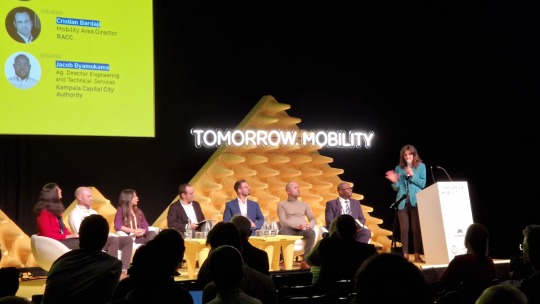
It was very interesting to hear that in Toulouse, they have built a new metro with both secured bicycle parking and bicycle parking with charging points. Yet neither of them is being well used. Having the right infrastructure in place, does not guarantee it will be used. The person from BYCS made a comparison with Amsterdam Nieuw-West where there are plentiful segregated bicycle infrastructure, yet the bicycle usage in that part of Amsterdam is very low compared to the rest of the city, because it is very easy to have and use a car in those neighbourhoods. Concerning shared mobility, the researcher from RACC told that recent researches in Barcelona showed that 50% of the people using shared e-scooters (steps in Dutch) or e-mopeds (scooters in Dutch) came out of public transport. 30% used to walk before and approximately 10% came out of the car. That makes shared mobility solutions targeting the wrong people in the mobility system. The person from TIER confirmed these statistics.
The panels basic conclusion was that if you want to promote active and shared mobility, you need to have a vision in place how to target the right people, make certain you have the right infrastructure in place - and make sure it is more convenient than any alternatives - to create step-free door-to-door solutions, both in the hardware outside as the software and to take time to change the mindset. Not everything has to be done in two years’ time.
Some other pictures of the day:





1 note
·
View note
Note
put that phone line to wrightbus down we're not doing this again
class 142
leyland dared ask the question "what is a train if not a bus on a freight wagon" and we all learned they are so much more
9 notes
·
View notes
Photo

Go Ahead London (Metrobus) Wrightbus Eclipse Gemini LX06 DZW (WVL238) working Route 127 departing from Wallington Station.
If you would like to view more Go Ahead London (Metrobus) Vehicles, please check out the LS Photography website.
2 notes
·
View notes
Video
Lothian 584 brightening up Princes Street, Edinburgh. by Roy Calderwood Via Flickr: Lothian 584 - in its special livery celebrating Pride Edinburgh - makes a colourful scene as it heads west along Princes Street. The bus is working a route 3 journey from either Dalkeith Campus or Mayfield to Clovenstone. The Urban Outfitters store on the left was once the Virgin Megastore while a previous building at this location housed Darlings department store.
#Lothian#Pride Edinburgh#Eclipse Gemini 3#Wrightbus#B5LH#Volvo#SJ67 MGV#584#Service 3#Edinburgh transport#Transport for Edinburgh#Lothian Buses#Lothiancity#double decker#bus#Princes Street#Edinburgh#Scotland#gaypride#lgbtpride
35 notes
·
View notes
Text
UK Gov Gives £77m for Zero-Emission Vehicle Projects
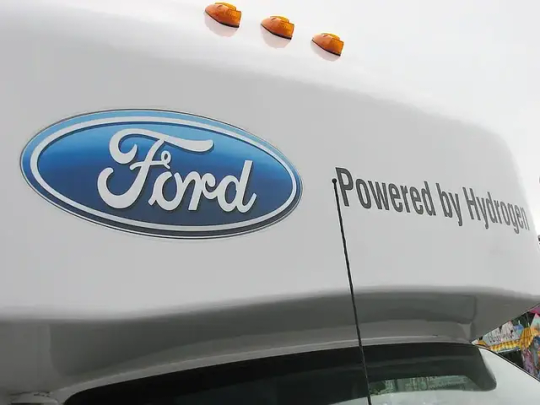
- More than £77 million in joint Government and industry funding to develop zero-emission vehicles including fire engines and ambulances - Projects expected to support more than 4,400 jobs across the UK over the next decade, delivering the government’s priority to grow the UK economy - Innovations in clean engine technology, for zero-emission buses and to overhaul EV factory productivity also get backing Life-saving emergency services will benefit from greener zero-emission vehicles, thanks to £77 million in new funding for projects developing clean transport technologies, announced today. The HYER POWER project, to develop a hydrogen fuel-cell range extender for specialist electric vehicles in demanding roles like fire engines and ambulances, is just one of seven pieces of work across the UK that are getting joint Government and industry backing. The schemes, which range from work on battery-powered buses, to a hydrogen-powered version of the iconic Ford Transit van, will support more than 4,400 jobs across the UK over the next decade, from Bath to Ballymena. Investing in the development of cutting-edge technologies in key industries will help deliver on the government’s priority to grow the UK economy.

Official portrait of the Industry and Economic Security Minister, Ms Nusrat Ghani. MP. Photo by Chris McAndrew. Wikimedia. Industry and Economic Security Minister Nusrat Ghani said: Zero-emission cars, vans, and taxis are increasingly common, but this cutting-edge work is going to mean clean, green vehicles designed and built in the UK can increasingly take on the toughest jobs too, from life-saving emergency services to haulage and public transport. Our automotive industry keeps setting the pace globally and seizing the potential of new technologies. Today’s multi-million-pound boost will help them stay ahead of international competition while delivering on our priority to grow the economy and support high-quality jobs. The funding has been awarded through the Advanced Propulsion Centre (APC) Collaborative Research and Development program, in support of ambitions to build an end-to-end supply chain for zero-emission vehicles (ZEVs) in the UK. £38.4 million of this investment comes from Government, backed by a further £38.7 million from the automobile industry – taking today’s total to just over £77 million. Joint government and industry funding winners are: - HYER POWER – ULEMCO Ltd £7.9 million backing to develop a hydrogen fuel cell range extender for electric vehicles used for specialized and challenging purposes, such as ambulances, fire engines, and street sweepers. - HEIDI – Bramble Energy Ltd £12.7 million for work to demonstrate a novel fuel cell/battery hybrid powertrain on a double-decker bus, that will be cheaper than the equivalents currently available for large vehicles. - FCVGEN2.0 – Ford Motor Company Ltd £16.3 million awarded to design and develop a hydrogen fuel cell-powered version of the Ford Transit van, which will initially be produced at Ford Dagenham. - NEXTGENZEBS – Wrightbus £12.7 million backing for new, market-leading technology to underpin battery and fuel cell electric buses. - EleVAIT – JLR Receiving £12.6 million to design and develop technology for inverters – a key component in electric vehicles, supporting the continued growth of a UK-based electric vehicle supply chain. - CAVENDISH – BorgWarner Awarded £9.8 million for work to speed up the rollout of hydrogen-burning internal combustion engines, as an alternative to diesel, for use in heavy-duty settings. - ZETTA – Leyland Trucks Ltd A £5.1 million investment. By better use of automation and advanced testing, Leyland Trucks aim to increase productivity and step up their production of battery electric trucks. Chief Executive at the APC Ian Constance said: Investment into these seven collaborative projects continues the work that the UK does very well. Research and development, building the automotive supply chain, pushing the boundaries of clean technology for the road, whilst securing jobs across the country. I’m pleased to have well-known brand names among this £77 million funding round through the APC, as well as innovative SMEs bringing through exciting new developments. Today’s announcement comes on top of funding also being invested by the government through the Automotive Transformation Fund (ATF) to develop a high-value end-to-end electrified automotive supply chain in the UK. This includes unlocking private investment in gigafactories, battery material supply chains, motors, power electronics, and fuel cell systems. The ATF is being delivered by the Department for Business and Trade in partnership with the APC. The government has committed a record £211 million to battery research and innovation through the Faraday Battery Challenge, to help the sector deliver 100,000 jobs in battery gigafactories and the battery supply chain by 2040. The funding will be delivered by UK Research and Innovation (UKRI) with support from the Faraday Institution, Innovate UK, and the UK Battery Industrialisation Centre (UKBIC). The UK Hydrogen Strategy sets out how the government, working with industry, is aiming to develop 10GW of hydrogen production capacity by 2030, for use across the economy. This forms a part of the British energy security strategy for delivering secure, clean, and affordable British energy for the long term.
Background
EleVAIT – JLR £6.3 million awarded by the government, matched by industry to a total of £12.6 million. This research project will explore and develop technology for inverters – a key component in electric vehicles. As well as developing a best-in-class product, this work will support the growth of a UK supply chain in components for electric vehicles. Project partners include: the University of Bristol, Customer Interconnect Ltd, API Capacitors Ltd Jobs created or safeguarded: 1,258 CO² savings: 55,000 tonnes. FCVGEN2.0 – Ford Motor Company Ltd £8 million awarded by the government, matched by industry to a total of £16.3 million. This project will design and develop a hydrogen fuel cell-powered version of the Ford Transit van, with the Ford Dagenham engine factory to be re-purposed for the initial production of the vehicle. By bringing the manufacturer, vehicle operator, and supply chain businesses together, this project aims to establish a business case for the wider rollout of hydrogen Light Commercial Vehicles. Project partners include: Ocado, BP, Cygnet Texkimp, Cambustion, Vrititech Jobs created or safeguarded: 167 CO² savings: 4.1m tonnes. NEXTGENZEBS – Wrightbus £6.4 million awarded by the government, matched by industry to a total of £12.7 million. This project will produce a new, market-leading platform for battery and fuel cell electric-driven buses. Whilst demand is growing for zero-emission vehicles, there are currently few options available for heavy, multi-axle vehicles like large buses. Project partners include: Queens University Belfast, Grayson Thermal Systems, Hutchinson Engineering, Translink Jobs created or safeguarded: 883 CO² savings: 3.4m tonnes. CAVENDISH – BorgWarner £4.9 million awarded by the government, matched by industry to a total of £9.8 million. This project aims to speed up the rollout of hydrogen-burning internal combustion engines, as an alternative to diesel. Project Cavendish will develop new fuel and air management systems so that existing heavy-duty diesel technologies can be repurposed to use hydrogen as fuel. Project partners include: Mahle, Cambustion, Hartridge Jobs created or safeguarded: 513 CO² savings: 31.6m tonnes. ZETTA – Leyland Trucks Ltd £2.6 million awarded by the government, matched by industry to a total of £5.1 million. By better use of automation and advanced testing, Leyland Trucks aim to increase productivity and step up their production of battery electric trucks. A ‘digital twin’ of the Leyland production line will be set up, meaning any changes can be run in simulation before being rolled out physically. Project partners include: Expert Tooling, HSSMI Jobs created or safeguarded: 439 CO² savings: 12m tonnes. HYER POWER – ULEMCO Ltd £3.9 million awarded by the government, matched by industry to a total of £7.9 million. This project will develop a hydrogen fuel cell range extender for electric vehicles used for special purposes, such as ambulances, fire engines, and street sweepers. The zero-emission range extender will be based on existing, proven technology from the Toyota Mirai, and demonstrate how zero-emission vehicles can be used in a wide range of specialized and challenging settings. Project partners include: Altair Engineering, Emergency One, Technical Services Ltd, Oxon Fire & Rescue Services Jobs created or safeguarded: 682 CO² savings: 1.1m tonnes. HEIDI – Bramble Energy Ltd £6.3 million awarded by the government, matched by industry to a total of £12.7 million. This project will demonstrate a fuel cell/battery hybrid powertrain on a double-decker bus. This novel product will be cheaper than the equivalents currently available for large vehicles like buses and uses innovative new electronics and energy recovery technologies. Project partners include: the University of Bath, Equipmake, Aeristech Jobs created or safeguarded: 498 CO² savings: 5.9m tonnes. About the Advanced Propulsion Centre UK The Advanced Propulsion Centre (APC) collaborates with the UK government, the automotive industry, and academia to accelerate the industrialization of technologies, supporting the transition to delivering net-zero emission vehicles. Since its foundation in 2013, APC has funded 199 low-carbon projects involving 450 partners, working with companies of all sizes, and will have helped to create or safeguard over 55,000 jobs in the UK. The technologies developed in these projects are projected to save over 350 million tonnes of CO², the equivalent of removing the lifetime emissions from 14.1 million cars. With its deep sector expertise and cutting-edge knowledge of new propulsion technologies, APC’s role in building and advising project consortia helps projects start more quickly and deliver increased value. In the longer term, its work to drive innovation and encourage collaboration is building the foundations for a successful and sustainable UK automotive industry. In 2019 the UK government committed to the Automotive Transformation Fund (ATF) to accelerate the development of a net-zero vehicle supply chain, enabling UK-based manufacturers to serve global markets. ATF investments are awarded through the APC to support strategically important UK capital and R&D investments that will enable companies involved in batteries, motors and drives, power electronics, fuel cells, and associated supply chains to anchor their future. Additional information is available on the: Advanced Propulsion Centre website. Sources: THX News, Department for Business and Trade & Nusrat Ghani MP. Read the full article
0 notes
Text

A livery that kinda fits in with my asthetic here's refurbished Volvo B5LH Wright Eclipse Gemini 2 BN61 MWF 39208 at Middleton bus station yesterday, a total chance encounter, so happy I had the camera too oh my watermark is my Instagram name
#Volvohybridbus#VolvoB5LH#GoNorthWest#BN61MWF#39208#Wrightbus#wrighteclipsegemini2#Hybrid#asthetic#bus#Middleton
1 note
·
View note